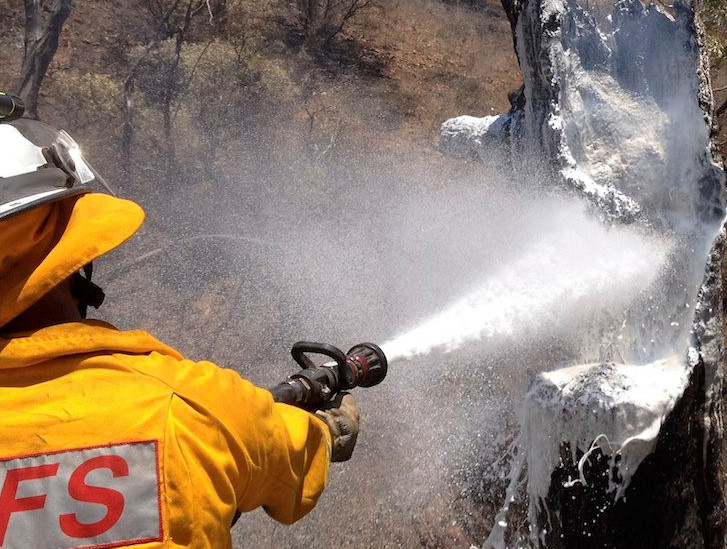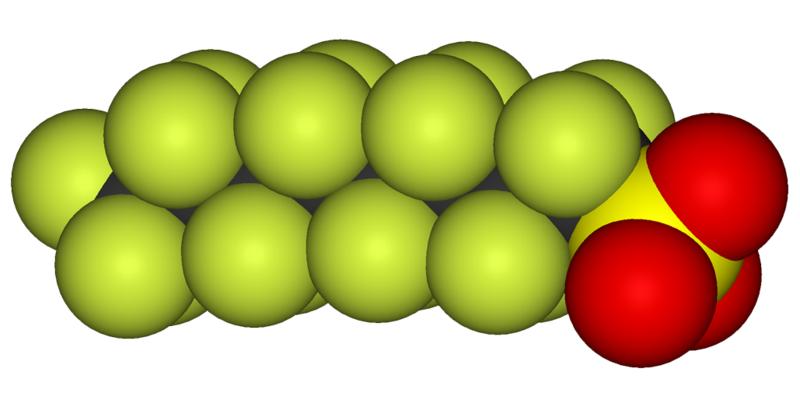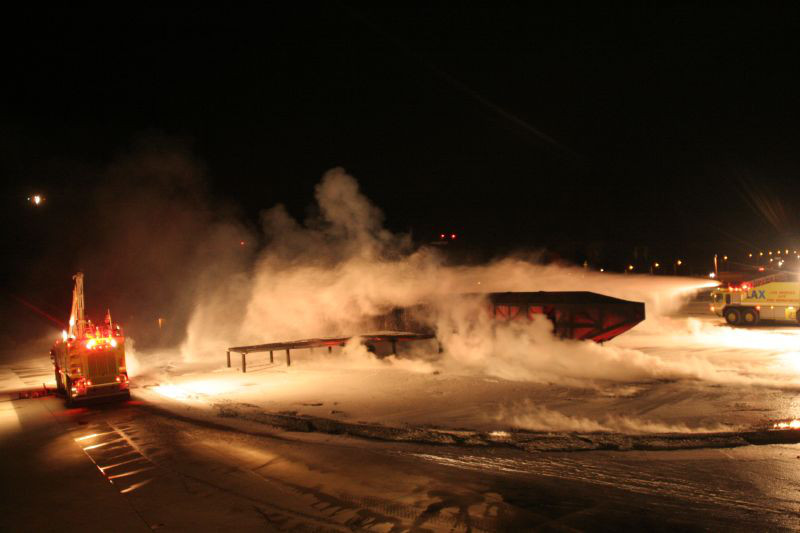
DECIPHERING how a synthetic chemical compound behaves in nature might prove a harder task than the time spent creating it in the lab.
That’s particularly the case for one group of complex organic compounds known as Per- and polyfluoroalkyl substances or PFASs, created in the 1940s and including PFOA and PFOS. They have many applications but are particularly known for use in fire-fighting foams. However, since the 2000s, it’s been recognised that in seeking to solve one problem, we created another: a recognised bio-accumulative contaminant that is very persistent in the environment.
The first exhaustive audit of peer-reviewed research on the behaviour of PFAS in soils has highlighted the urgent need for more focused investigation to decode how long-chain, and the short-chain PFASs created to replace them, move through soils and leach into the environment.
In a paper published in Science of the Total Environment, Dr Rai Kookana and co-authors suggest we need a far better understanding of the behaviour of PFASs in soil if we are to develop the effective methods required for decontamination – and it might require a united global research effort.
Strongest bonds in chemistry
The chemical chain looks simple enough on paper; a carbon and fluorine atom spine and alkyl tail of carboxylates, sulfonates, sulphonamides, phosphonates and alcohols. It’s what makes them stable and resistant to heat and breakdown in the environment.
That fluorine-saturated aliphatic chain of atoms also has the unique ability to repel water and oil – to be both hydrophobic and oleophobic, unique chemistry which led to widespread applications in industry.

Explains Dr Kookana: “PFAS chemicals are unlike traditional organic chemicals. Most organic chemicals would prefer to associate either with water or with oil. These compounds happen to be designed to be surface-active such that they’re able to make a film at the interface of water and fuel in a unique way for them to fight fire.”
“Persistence of these chemicals is one of the key problems – a chain of carbon and fluorine, they come in different shapes and sizes but one thing in common, they all have carbon saturated with fluorine. That is among one of the strongest bonds in chemistry, so strong it doesn’t break down easily,” he says.
“Their unique properties means the way they stick to soils and sediments is very different to other organic chemicals and the conventional methods we have used (in risk assessment) do not always work with them. Because of their complex chemistry there are several factors which affect their binding to soils and sediments.”
Pervasive in the environment
The 3M Company started phasing out production of PFOS in 2000. PFOS was added to the Stockholm Convention on Persistent Organic Pollutants in 2010 and PFOA and related substances are under consideration for listing as Persistent Organic Pollutants (POPs)
But the legacy of 50 years of use persists - detected in humans, fish and wildlife world-wide; in wastewater treatment, fresh water and groundwater systems. Because of their use as fire retardants, they have been commonly detected in firefighting locations worldwide, including air force and military sites, firefighting training sites, airports, traffic accident sites, and some mining industries.
It’s not just that they don’t break down easily. PFASs have another unique ability to leach through soils relatively easily and as such are quite mobile.

Says Dr Kookana: “The key factor in determining the risk of PFAS from a contaminated soil is whether the chemical will leach out of the soil, and how they will move through soil profile to groundwater and what factors determine their leaching.”
Dr Karl Bowles, Senior Scientist in the Environment Protection Science Branch of the New South Wales Office of Environment & Heritage points out that the major difference between PFASs and other chemicals lies in their routes into the environment.
“Regular firefighting training has unfortunately seen PFAS getting into the environment at sites around Australia and the world.”
The movement of PFASs in the environment also presents a challenging contamination problem.
“With other chemicals we’ve got a much better idea how they react with soils and sediments, and how they travel through groundwater,” he says.
“These PFASs have got unique chemical properties, so the normal rules we apply don’t work.
“They are more mobile in the environment than most other problem chemicals we deal with. So the areas impacted are greater. It’s the scale of the thing,” says Dr Bowles.
Complex interaction with soils
A quick news search shows how widespread is concern of PFAS contamination worldwide, and the proliferation of research effort focused on better understanding and addressing the problem.
“We wanted to take stock of all the studies – let’s take all public data and scrutinise that data. We generated 185 data sets,” says Ms Danielle Oliver, the co-author of the research.
According to the paper: The objective was to (i) collate all available peer-reviewed data on sorption and associated soil/sediment properties, (ii) critically evaluate the quality of the data and choose the best available data for further analyses, and (iii) to establish the role of single and combinations of physico-chemical properties of soils and sediments in determining the sorption behaviour of PFASs.
Current research indicates that PFASs behave differently in different soils, and some soils are more conducive to leaching than others.
“This review highlighted that at least OC (organic carbon), pH and clay content are properties having significant effect on sorption. There is a clear need for more data and studies with thorough characterisation of soils or sediments to better understand their role in PFASs sorption. Current assessments based on OC alone are likely to be erroneous,” the paper says.
Dr Glen Walker, Team Leader of Existing Industrial Chemicals in the Australian Government Department of the Environment and Energy, says the paper highlights a key misunderstanding in the current approach to modelling the environmental fate of this group of chemicals.
“Traditional organic chemical contaminants are reasonably well modelled by considering the interaction of the chemical with the soil OC content. With these models you can predict the way the contaminant will behave in soil including its mobility and its bioavailability for uptake by plants and animals. What this study shows is that traditional approach will need to be modified for PFASs.
“One of the key mysteries has been how do PFASs get into remote areas. But now the focus is how easily they move in the soil environment.
“It’s part of the theme, they don’t fit our preconceptions for how organic chemical contaminants will behave in the environment.”
Dr Walker presented some highlights of the research to scientists and regulators at an international workshop on PFASs in Zurich in November.
“They were interested in this research because it challenges some of the preconceptions.
“There was a feeling this was a solved problem and this paper shows it’s clearly not.”
“This work has highlighted the limitations of the current approach and that you need to better understand how the soil environment influences the interactions that each major class of PFAS has with soils. Until you do that you won’t have a clear understanding of how long PFASs will persist in soil or how likely they will be to move. These are important considerations when considering how to establish priorities for risk assessment and environmental remediation of sites that are contaminated with PFASs.”
Says Dr Bowles: “What this paper does very clearly is to demonstrate that PFASs do interact with soil organic carbon but they also interact strongly with other soil components such as clay.
“It very neatly brings together the available information to suggest that binding to these other compounds is very important, so if we want to know what’s going on we need to know a lot more,” he says.
“Ultimately that should lead to better understanding of the exposure path ways and better sense of risk.”
Coordinated research effort focusing on soils
The paper calls for a single study on sorption of PFASs, based on a large number of soils (for example, a set of > 100 soils) that are fully characterised using the same method and which could be used in model development.
Since PFASs are generally found to coexist with other contaminants such as petroleum hydrocarbons, the role of co-contaminants on sorption behaviour of PFASs needs to be examined.
“We believe such a critical study and synthesis is crucial for the development of a better understanding of the sorption behaviour of PFASs in soils/sediments,” the report concludes.
Dr Kookana puts it more broadly, saying it is a global problem requiring a global response, “you would like all hands on deck”.
Professor David Sedlak, Co-Director of the Berkeley Water Center at the University of California, Berkeley, is keynote speaker at the What’s in Our Water Symposium in Canberra later in the year talking on "Lessons Learned from the Last Two Decades of Emerging Contaminants".
He confirms regulatory agencies around the world are asking questions about the fate, transport and remediation of PFAS contaminated soils, sediments and groundwater.
“As the issue expands beyond firefighter training areas, it is crucial that researchers around the world work together to get a better handle on the behaviour of these emerging contaminants,” says Professor Sedlak.
PFASs will be on the agenda at the What’s In Our Water 2018 symposium from October 30-November 1, with keynote speaker Dr David Sedlak, Malozemoff Professor at the University of California, Berkeley, and Co-Director, Berkeley Water Center. https://www.wiow.com.au/
